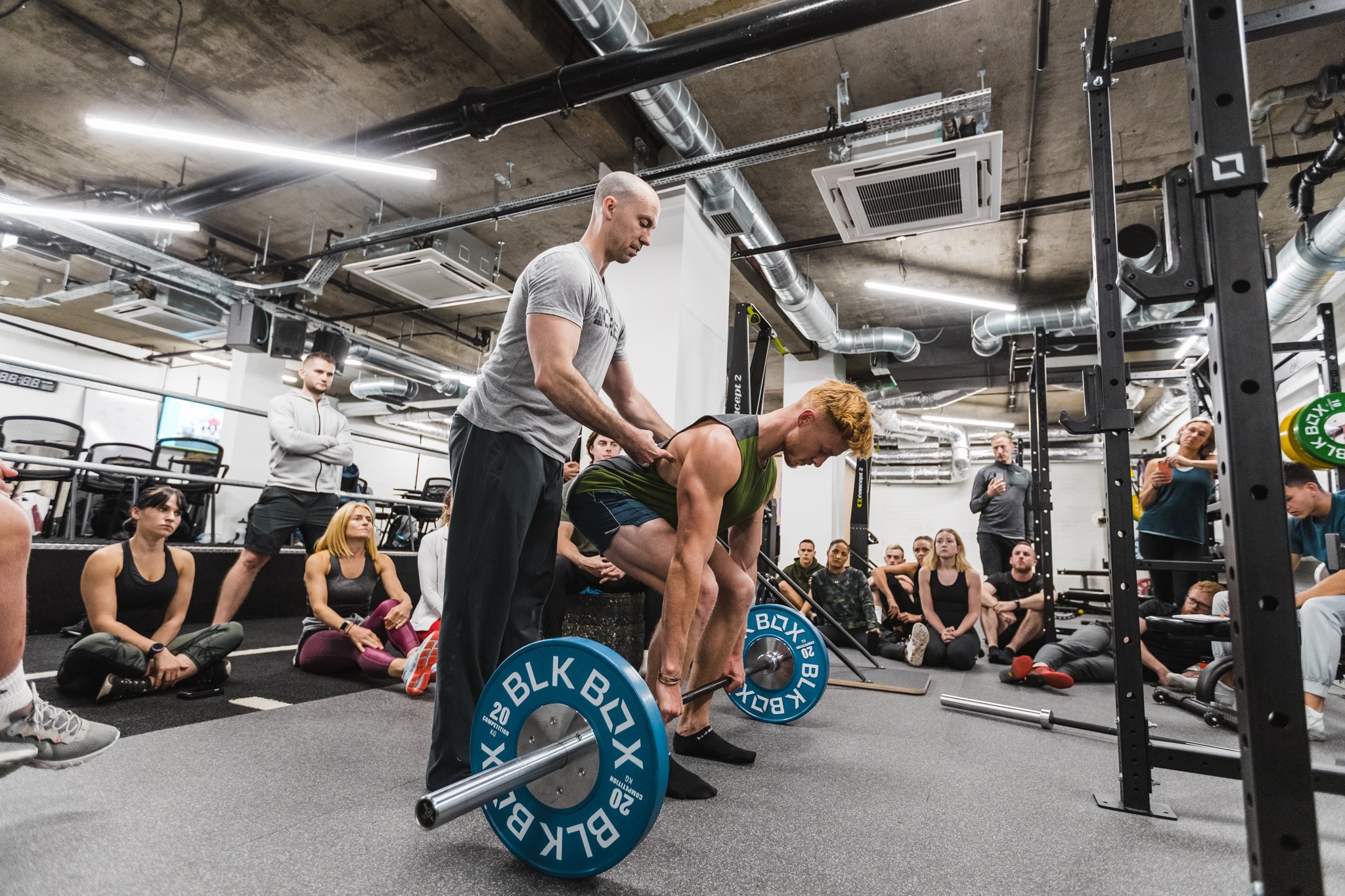What age group uses the gym the most?
Baby Boomers are the age group that uses the gym the most, but Millennials have the most gym memberships. Keep reading to learn more about the average age of gym-goers.

Understanding gym age demographics helps gym owners and fitness professionals tailor services to different age groups. Whether you’re evaluating what age group works out the most, what percentage of the population goes to the gym, or analyzing fitness app statistics, knowing these gym membership statistics and fitness industry trends like the rise of boutique fitness and HVLP gyms are essential for success. Below is a detailed table outlining gym goer statistics, including average age for gym membership, gym participation rate, and most active age groups.
| Age Group | Gym Participation Rate | Most Common Gym Activities | Fitness App Usage Rate | Average Age of Gym Membership | Best Gym Offerings for Age Group |
|---|---|---|---|---|---|
| 18-24 years | 60% | Weightlifting, HIIT, group fitness classes | 80% | 23 years | Student discounts, group classes, tech-driven workouts |
| 25-34 years | 55% | Weightlifting, functional fitness, cardio | 70% | 28 years | Functional training, personal training, flexible memberships |
| 35-44 years | 45% | Strength training, yoga, group fitness | 55% | 36 years | Strength training programs, structured fitness plans |
| 45-54 years | 35% | Low-impact training, functional movement | 40% | 44 years | Low-impact group classes, recovery-focused workouts |
| 55-64 years | 25% | Cardio, flexibility training, strength training | 30% | 52 years | Senior fitness programs, flexibility & balance training |
| 65+ years | 15% | Low-impact workouts, walking, aquatic fitness | 20% | 60 years | Wellness-focused programs, easy-access facilities |
When planning your gym, then if you want to open a gym, it’s crucial to consider the demographics of your gym target market. What age group uses the gym the most? What do the different age groups look for in a gym? Can you target them all, or is it better to pick a niche? Firstly, all gym-goers, regardless of age, will appreciate a clean, well-organized gym with convenient features (such as the best gym check-in software). But if you’ve already got that covered and are ready to attract a specific membership, then keep reading.
And, of course, to manage and grow your gym with marketing and services that appeal to all demographics, both in-person and online, then be sure to check out the best gym software and the best personal training software: Exercise.com.

What age group goes to the gym the most?
Here are some more key gym membership statistics:
- Millennials have the most gym memberships, but Baby Boomers go to the gym most often.
- The various generations all have different activity preferences when it comes to exercise.
- There are pros and cons to focusing on attracting a specific age group.
According to the IHRSA, Millennials (those born between 1980 and 1999) hold 33 percent of gym memberships in the US, the largest of any age group. Next up is Gen X (those born between 1965 and 1979) with 24 percent. Baby Boomers (those born between 1945 and 1964) come in third with 22 percent. The rest is made up of Gen Z (those born in the year 2000 and later) at 14 percent and the Silent Generation (those born before 1945) at 7 percent.
Which age group exercises the most? Just because Millennials hold the most gym memberships doesn’t mean they actually spend the most time at the gym. That title goes to the Baby Boomers, who visit the gym an average of 131 times annually. By comparison, Gen Z only goes to the gym an average of 71 times annually.
What age group exercises the most?
According to recent studies, individuals in the age group of 18-34 exercise the most compared to other age groups. This demographic is more likely to prioritize physical fitness and incorporate regular exercise into their daily routines.
Young adults in the specified age range are often more concerned about their overall health and well-being, leading them to engage in various forms of physical activity regularly. The 18-34 age group is characterized by higher levels of energy and motivation, making it easier for them to maintain a consistent exercise regimen.
What Age Do Most People Start Working Out?
✔ The most active age group in gyms is 18-24 years, with a 60% participation rate.
✔ The average age for gym membership sign-up is 23 years old.
✔ Fitness app statistics show that younger demographics (18-34 years) have the highest usage rates, while older demographics (55+) tend to prefer in-person training.
✔ Percentage of people who go to the gym declines with age but remains above 25% for ages 55-64.
Is the Gym Becoming More Popular?
✔ Health and fitness statistics show steady growth in gym memberships across all age groups.
✔ More younger people (18-34 years) are engaging in gym workouts and fitness technology.
✔ Online fitness and hybrid training models are attracting older demographics who prefer guided, structured workouts.
📢 Looking for the best gym management software to track memberships and age demographics? Request a demo of Exercise.com today! 🚀

Demographics of Gym Members
It’s not entirely surprising that different age groups prefer different types of fitness activities. Here are some exercise statistics by age group:
- Gen Z largely prefers group fitness settings, and 62 percent of Gen Z gym-goers belong to a YMCA or other non-profit fitness center.
- Millennials favor activities such as yoga and HIIT. Non-coincidentally, this age group is also the most likely to belong to a boutique fitness center.
- Gen X are most attracted to a traditional commercial gym, and they most often utilize cardio machines and weight training equipment.
- Unsurprisingly, gym-goers belonging to the Baby Boomer and older generations prefer low-impact activities, such as elliptical machines and water aerobics.
Gym Demographics Statistics
Read these gym demographics statistics and then be sure and check out our big list of gym membership statistics. Gym memberships and fitness behaviors vary widely across different demographics, reflecting trends, preferences, and motivations in the fitness world. From frequency and time of gym visits to reasons for joining or quitting, these statistics provide insight into the diverse landscape of gym-goers.
- Membership and Attendance: In 2019, over 64 million Americans had gym memberships, with about 44% of members attending the gym at least twice a week. Despite this, a striking 67% of gym memberships go unused, highlighting a gap between intentions and actions in fitness commitments.
- Peak Times and Days: Gyms are busiest at 5:30 PM on weekdays and around 10:00 AM on weekends, with Tuesdays being the most popular day for workouts. Interestingly, early mornings (4 AM – 5 AM) and late evenings (8 PM – 9 PM) are among the least busy times.
- Duration and Time of Visits: Approximately 35% of gym-goers spend between an hour and two hours per gym session, with the early morning hours of 5 a.m. to 9 a.m. being the most popular time for gym visits.
- Membership Costs: The average monthly gym membership fee varies significantly among popular fitness centers in the US, ranging from $10 at Planet Fitness to $100 at Lifetime Fitness. This variance reflects the diverse offerings and target demographics of different gym chains.
- Cancellation and Retention: High attrition rates are a challenge for gyms, with 50% of all new gym members quitting within the first six months. This statistic underscores the importance of engagement and satisfaction in retaining gym members.
- Reasons for Joining and Quitting: The primary reasons people join gyms include self-motivation, the influence of friends, and the desire for an active lifestyle. Conversely, lack of commitment and financial constraints are common reasons for quitting, highlighting the need for gyms to address these barriers to maintain their clientele.
These gym statistics paint a picture of a dynamic and evolving fitness industry, where understanding the habits and preferences of gym-goers is crucial for gyms to adapt and thrive.
Should my gym focus on attracting younger or older members?
The two highest-growing age brackets in the US are the old (those aged over 55) and the very young (those under 18). Understand that you can’t be everything to everybody, and there are pros and cons no matter which age group you aim for. Before you pick your target audience, there are several factors to consider.
Disposable income typically rises with age, which can certainly benefit your business in many ways. Does your gym have a focus or niche that would appeal to the younger set, or is it more of a general gym set-up? What is your branding like? Do you have the space for group classes and activities — or conversely, a pool?
Can you accommodate the specific needs of older or younger age groups? For younger gym-goers, this might include childcare or after-school programs. Older gym-goers will appreciate personal trainers knowledgeable about arthritis and osteoporosis. Your answers to these questions will likely reveal a lot about the better course of action for your gym.
Who goes to the gym more, males or females?
The question of who goes to the gym more, males or females, has nuanced answers depending on the context and location. For example, in Germany, gym memberships were more common among men (56%) compared to women (44%) in 2020. However, in Australia, the scenario was slightly different with more females (54.3%) participating in gym/strength training activities than men (45.7%). In the US, among college students, a higher percentage of male respondents (64.2%) reported exercising at a gym at least once per week compared to female respondents (59.9%).
Furthermore, fitness preferences also vary by gender. Men tend to be more equipment-oriented, engaging in activities using free weights, weight/resistance machines, and cardio equipment. Women, on the other hand, show a preference for group exercise programs such as Pilates, dance, step, yoga, and barre. In the UK, a significant portion of gym memberships (54%) and group fitness class attendees (76%) are female, indicating a strong preference among women for organized fitness classes.
Overall, more men meet the national standards for exercise in the US, with 26.3% of men doing so compared to 18.8% of women. This suggests that while women might participate more in group fitness classes and gym memberships, men are more likely to meet broader exercise standards, which can include various forms of physical activity outside of gym settings.
These statistics highlight the diverse approaches to fitness and gym attendance between genders, influenced by cultural, social, and personal preferences.
The Bottom Line: What is the average age of gym-goers?
From Gen Z to Gen X, and from Baby Boomers to Millennials. It turns out that Millennials are most likely to buy a gym membership, but Baby Boomers are the most likely to actually use their gym memberships. However, due to age-related exercise preferences, your gym’s membership demographics may be completely different. Get to know your unique client base so that you can best serve their needs, and if you decide to branch out to attract different age groups, do so in ways that complement your current business without alienating your existing clientele.

If you’re ready to take your gym operations to the next level, Exercise.com can help. Book a demo to learn more!
References:










